Treatment Challenges for People with Headache and Migraine Disease
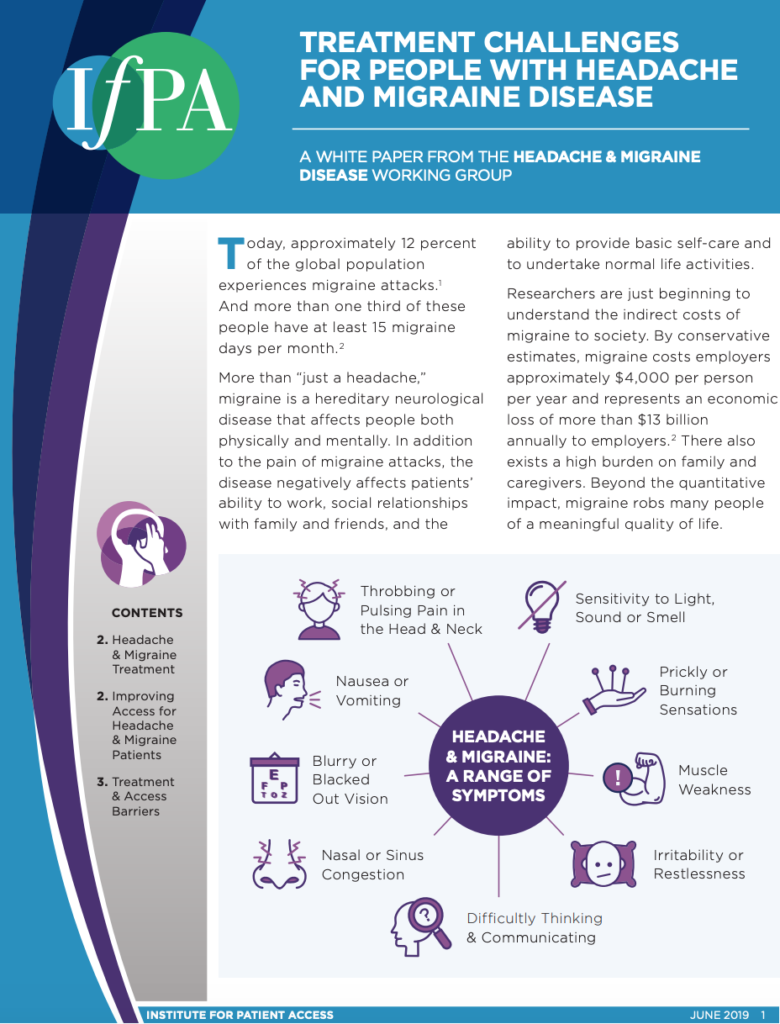
Today, approximately 12 percent of the global population experiences migraine attacks. And more than one third of these people have at least 15 migraine days per month. More than “just a headache,” migraine is a hereditary neurological disease that affects people both physically and mentally. In addition to the pain of migraine attacks, the disease […]
A Study of the Qualitative Impact of Non-Medical Switching
The story has become a familiar one. A patient with a chronic condition works with his or her doctor to find the right treatment. The condition is stabilized, manageable. But then that stable patient is driven by the insurance company to a drug that’s less expensive. The switch prioritizes insurers’ profit over patients’ health. And […]
Protecting Access to Diabetes Care
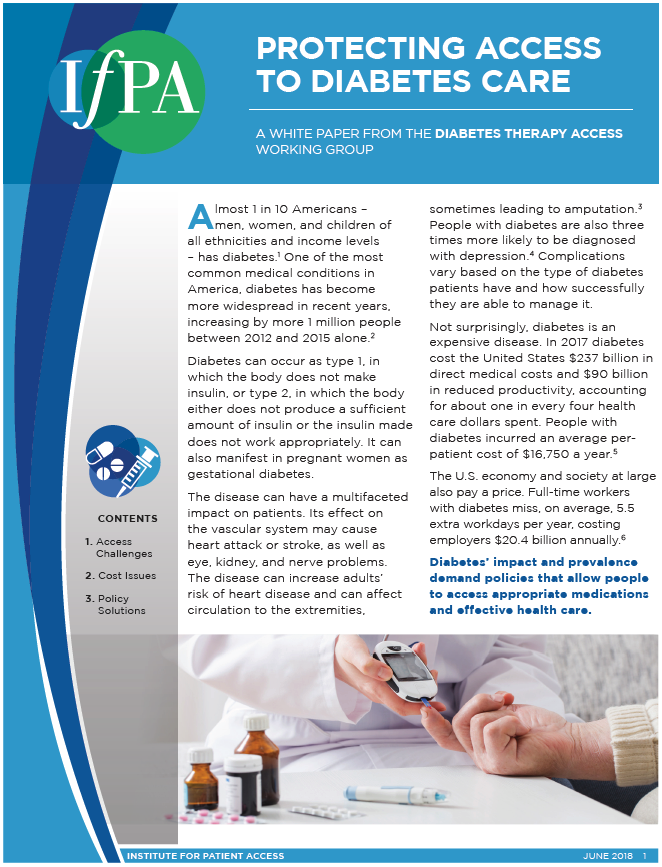
Almost 1 in 10 Americans – men, women, and children of all ethnicities and income levels – has diabetes.1 One of the most common medical conditions in America, diabetes has become more widespread in recent years, increasing by more 1 million people between 2012 and 2015 alone. Diabetes can occur as type 1, in which […]
The ICER Myth
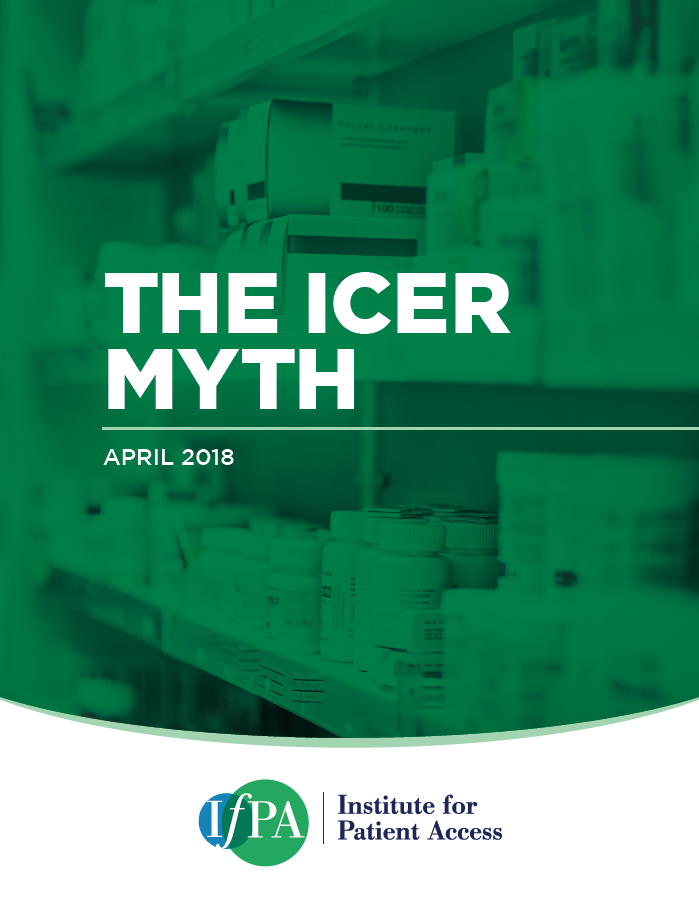
What stands between patients and the treatment prescribed by their doctors? In some cases, the barriers are obvious. High co-pays at the pharmacy counter, for instance, or a health insurer’s prior authorization requirement that leaves patients waiting for treatment. In other cases, the barriers are harder to grasp. Nowhere is this truer than with the […]
Improving Access to Respiratory Care
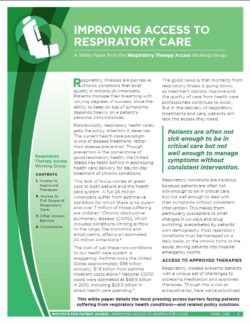
Respiratory illnesses are pervasive, chronic conditions that exist quietly in millions of Americans. Patients manage their breathing with varying degrees of success, since the ability to keep on top of symptoms depends heavily on a patient’s personal circumstances. Paradoxically, respiratory health rarely gets the policy attention it deserves. The current health care paradigm is one […]
Improving Access to Cardiovascular Care
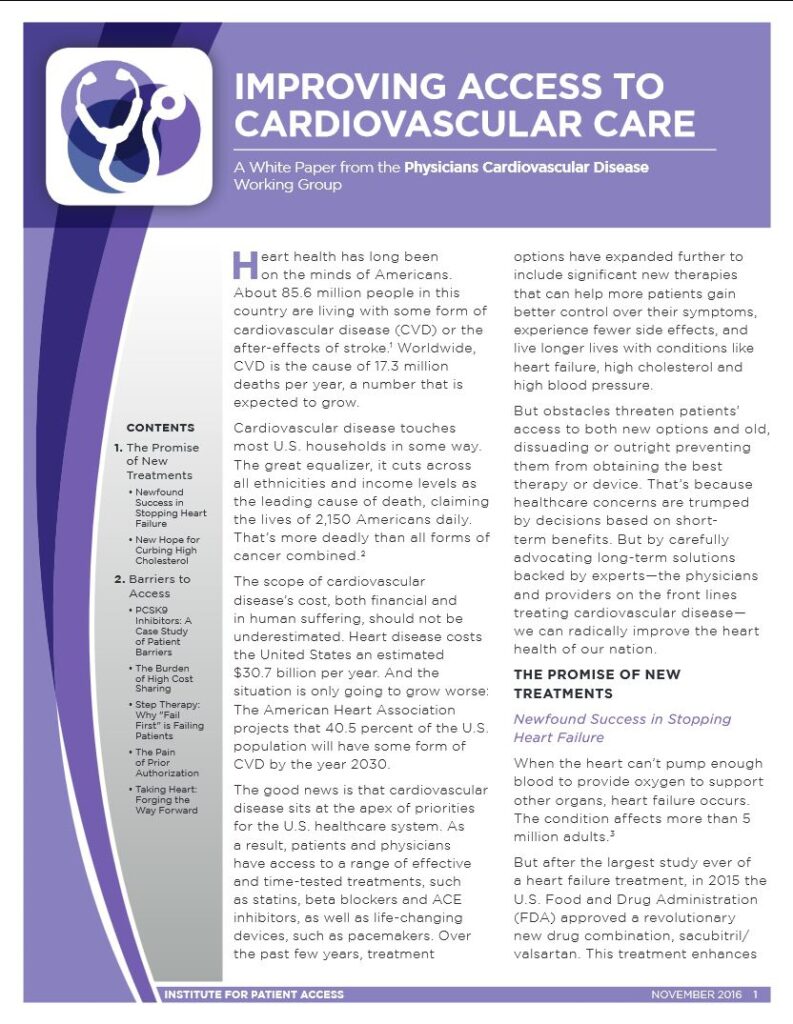
Heart health has long been on the minds of Americans. About 85.6 million people in this country are living with some form of cardiovascular disease (CVD) or the after-effects of stroke. Worldwide, CVD is the cause of 17.3 million deaths per year, a number that is expected to grow. Cardiovascular disease touches most U.S. households […]
Protecting Patient Access to Treatment for Neurodegenerative Diseases
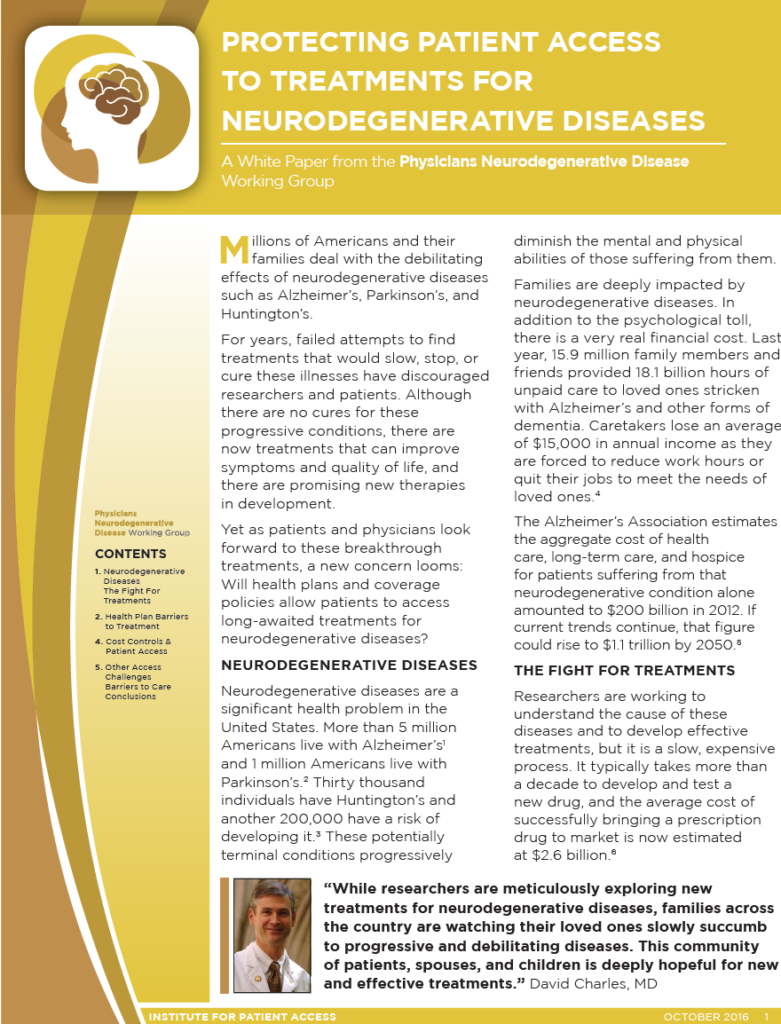
Millions of Americans and their families deal with the debilitating effects of neurodegenerative diseases such as Alzheimer’s, Parkinson’s, and Huntington’s. For years, failed attempts to find treatments that would slow, stop, or cure these illnesses have discouraged researchers and patients. Although there are no cures for these progressive conditions, there are now treatments that can […]
Improving Access to Respiratory Care
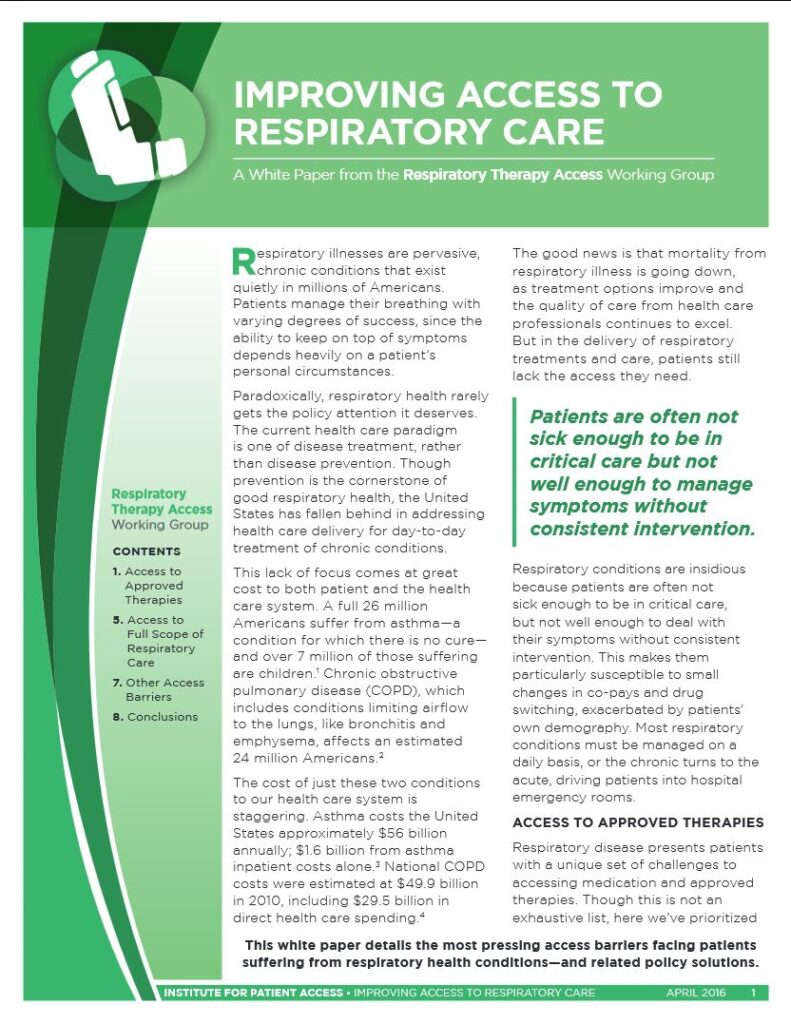
https://www.aarc.org/wp-content/uploads/2013/07/IfPA_Improving-Access-to-Respiratory-Care_April-2016.pdf
Improving Patient Access to Hepatitis C Cures

As many as 5 million Americans are infected with hepatitis C, a virus that is slowly wreaking havoc on their livers and may eventually kill them. Breakthrough medications that cure the disease are now available, but they come with a high price tag and are unaffordable for many. Complex insurance and governmental program requirements effectively […]
Protecting Cancer Care: Improving Transparency and Patient Access
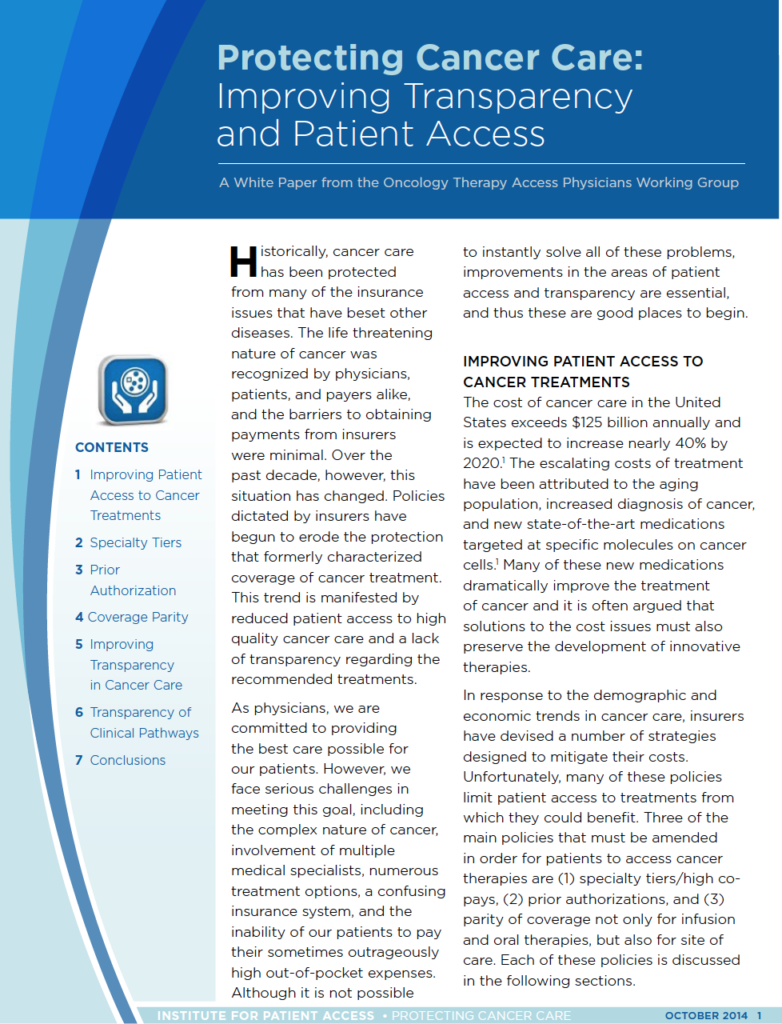
Historically, cancer care has been protected from many of the insurance issues that have beset other diseases. The life threatening nature of cancer was recognized by physicians, patients, and payers alike, and the barriers to obtaining payments from insurers were minimal. Over the past decade, however, this situation has changed. Policies dictated by insurers have […]

